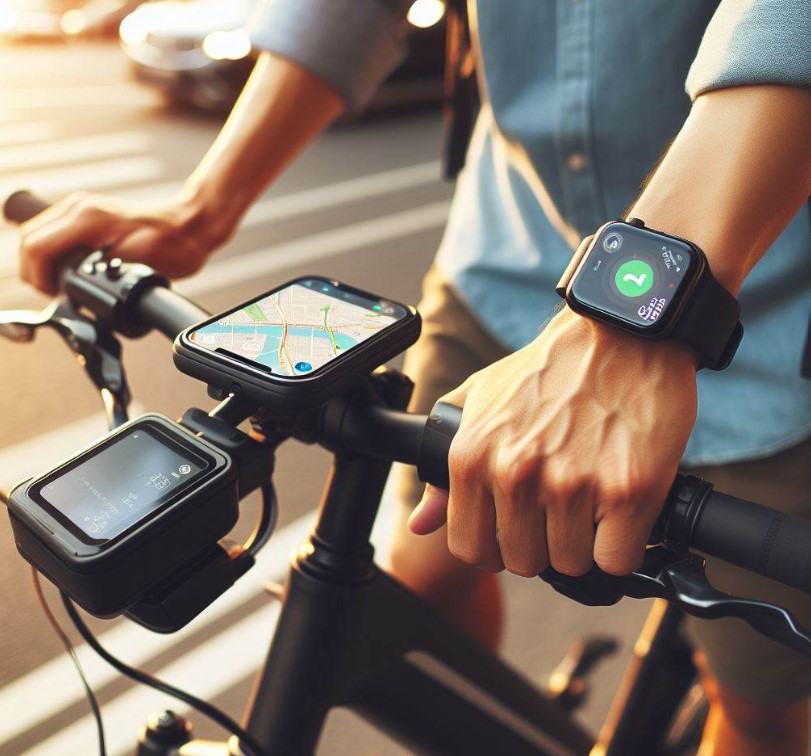Do Electric Bikes Have GPS? All You Need To Know
Electric bikes symbolize the fusion of eco-friendly transportation with cutting-edge technology. As they navigate through bustling city streets and serene countryside paths, one question often arises: Do Electric Bikes Have GPS? This feature has become a cornerstone for enhancing navigation, security, and overall riding experience, reflecting the evolving landscape of urban mobility.
Key Takeaways
- GPS integration in e-bikes enhances navigation and security.
- Not all e-bikes come with built-in GPS; it’s more common in higher-end models.
- GPS features can include real-time tracking, route history, and geofencing.
- Aftermarket GPS trackers offer a solution for e-bikes without built-in GPS.
- The use of GPS technology in e-bikes represents a blend of digital innovation with environmental consciousness.
Do Electric Bikes Have GPS?
Yes, many electric bikes do come equipped with GPS technology, especially higher-end models. However, the availability of GPS varies across different brands and models, with some offering built-in GPS functionalities and others allowing for aftermarket GPS tracker installations.

GPS Integration in Electric Bikes
How It Works?
GPS technology in electric bikes works similarly to other GPS-enabled devices. A GPS tracker embedded in the bike communicates with satellites to pinpoint its exact location on the globe. This information can be accessed through a smartphone app or a dedicated display on the bike, allowing users to track their movements, plan routes, or find their bike in case of theft.
Benefits of GPS in E-bikes
The primary benefits of GPS integration in electric bikes are manifold. Navigation becomes intuitive, allowing riders to explore new areas without fear of getting lost.
For fleet operators or rental services, GPS tracking ensures efficient management of their units. Furthermore, the anti-theft feature acts as a deterrent and a recovery tool, adding an invaluable layer of security to the investment.
Models with Built-in GPS
Identifying electric bikes equipped with GPS technology is crucial for consumers prioritizing connectivity and security. High-end models often boast this feature, integrating seamlessly with other smart functionalities for an enhanced riding experience.
Brands like VanMoof and Specialized are at the forefront, offering bikes that not only navigate and track but also support remote locking mechanisms triggered via GPS.
Aftermarket GPS Solutions for E-bikes
For e-bike owners whose models lack built-in GPS, aftermarket solutions present a viable alternative. These external devices can be discreetly attached to the bike, offering similar benefits in terms of tracking and security.
The installation process varies, but the peace of mind afforded by such technology makes it a worthy addition for any e-bike enthusiast.
GPS and E-bike Security
The advent of GPS technology in electric bikes has significantly enhanced their security. The ability to track a stolen bike in real time drastically increases the chances of recovery. Moreover, features like geofencing alert owners if their bike leaves a designated safe zone, providing an immediate heads-up in case of potential theft.
GPS technology transforms the way riders interact with their environment. It enables effortless exploration, and route optimization, and can even suggest bike-friendly paths, ensuring a safe and enjoyable journey.
The convenience of having detailed maps and directions at one’s fingertips encourages more people to choose e-bikes for their daily commute and leisure activities.
Can You Track A Stolen E-Bike?
Yes, you can track a stolen e-bike if it is equipped with GPS technology. Modern electric bikes, especially high-end models, often come with built-in GPS trackers that allow for real-time monitoring of the bike’s location.

For bikes without pre-installed GPS, owners can fit aftermarket GPS trackers that offer similar functionality. Once activated, these trackers enable the bike’s location to be viewed through a smartphone app or web platform, significantly increasing the chances of recovery after theft.
The effectiveness of tracking depends on the GPS signal strength, the quality of the tracker, and whether the bike remains in an area with cellular coverage. Law enforcement agencies can use this information to help recover stolen property, though it’s crucial for bike owners to report theft promptly and provide accurate information to authorities.
Where Do You Put A Tracker On An Ebike?
The placement of a GPS tracker on an e-bike is critical for ensuring it remains hidden and functional. Ideal locations vary but generally include areas that are not immediately visible or accessible to potential thieves.
Common spots for attaching a GPS tracker include under the seat, within the frame, behind accessories like water bottle holders, or inside the handlebar ends.

The goal is to choose a location that does not obstruct the tracker’s signal while keeping it concealed from a thief’s view. Some trackers are designed with specific attachment methods, such as adhesive strips, brackets, or ties, to secure them to the bike.
It’s also important to consider the tracker’s exposure to elements; many are weatherproof, but placing them in a somewhat protected spot can enhance durability.
How Can I Track My Bike Location?
Tracking your bike’s location is straightforward if it has a GPS tracker installed. For e-bikes with built-in GPS, owners can typically use a dedicated app provided by the bike or tracker manufacturer to view the bike’s location in real-time.
These apps often offer additional features like travel history, speed, and geofencing alerts. For bikes equipped with aftermarket GPS trackers, the process is similar: install the tracker, download the app associated with the device, and follow the setup instructions to start tracking.
The app will display the bike’s current location on a map and may provide notifications if the bike moves outside a predefined area. In both cases, it’s essential to ensure the tracker is charged and that the bike is within a location that has cellular or GPS signal coverage to maintain tracking accuracy.
Conclusion
The integration of GPS technology in electric bikes has transformed them into more than just a means of transportation; it has made them a beacon of innovation in the cycling world.
Whether through built-in systems or aftermarket solutions, GPS capabilities in electric bikes offer riders unprecedented control over their journeys, peace of mind regarding security, and a deeper connection with their surroundings.
As this technology becomes more widespread, it promises to further elevate the e-biking experience, making it more accessible, secure, and enjoyable for everyone.
Frequently Asked Questions
Can I use my smartphone as a GPS tracker for my electric bike?
Yes, you can use your smartphone as a GPS tracker for your electric bike by mounting it on the bike and using a GPS tracking app. However, this method may not be as secure or reliable as a dedicated GPS tracker, especially in case of theft, as thieves can easily remove the smartphone. Dedicated GPS trackers are designed to be discreet and tamper-resistant, offering better security for theft prevention and recovery.
How accurate are GPS trackers on electric bikes?
GPS trackers on electric bikes are generally very accurate, often to within a few meters. The accuracy can depend on the GPS tracker’s quality, the presence of obstacles that interfere with the signal (like tall buildings or dense forests), and the strength of the GPS satellite signals.
Do I need a subscription service for my electric bike GPS tracker?
Some electric bike GPS trackers require a subscription service to access all their features, such as real-time tracking, historical data storage, and cellular connectivity for sending location updates. Other trackers may offer basic functions without a subscription. It’s important to check the tracker’s requirements before purchasing.
Can electric bike GPS trackers prevent theft?
While GPS trackers can’t physically prevent theft, they significantly enhance security by deterring thieves and increasing the chances of recovering a stolen bike. Knowing that a bike can be tracked in real time makes it less appealing to steal. In case of theft, the real-time tracking feature allows the owner and authorities to trace and recover the bike.

Welcome to the exhilarating world of Matt Rex, a professional car racer turned renowned vehicle enthusiast. Immerse yourself in his captivating blog as he shares heart-pounding adventures, expert reviews, and valuable insights on cars, trucks, jets, and more. Fuel your passion for speed and discover the beauty of vehicles through Matt’s engaging stories and meticulous expertise. Join the ever-growing community of enthusiasts who find inspiration and expert advice in Matt Rex’s blog—a digital hub where the thrill of speed meets the pursuit of knowledge.






![Why My Bike Horn Is Not Working? [Explained]](https://www.turbochaos.com/wp-content/uploads/2024/01/Why-My-Bike-Horn-Is-Not-Working-768x511.jpg)
